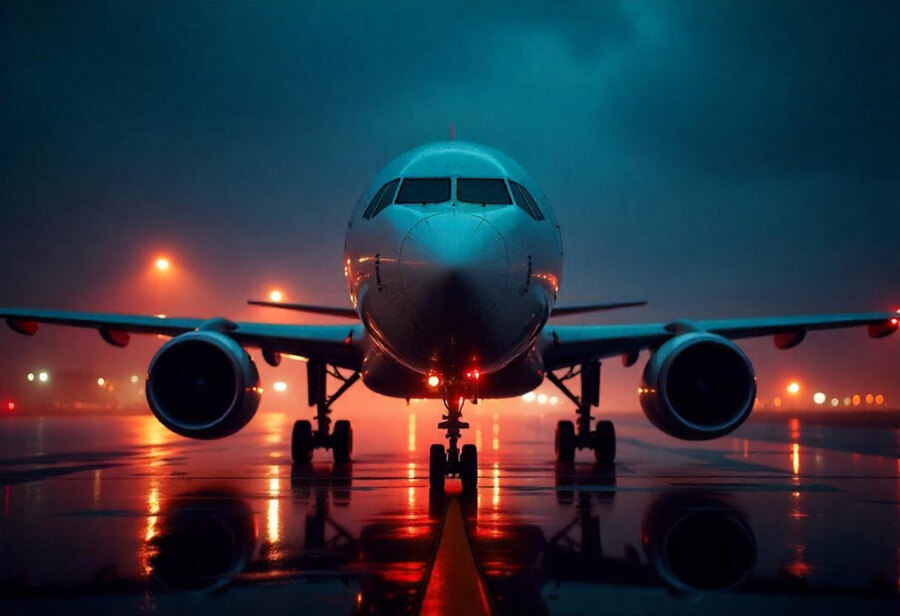Boeing 737 Emergency Landing in Osaka After Pressurisation Failure, No Injuries Reported - Travel And Tour World
Wednesday, July 2, 2025

On June 30, 2025, a Boeing 737 flying from Shanghai Pudong International Airport in China to Tokyo Narita Airport in Japan was forced to make an emergency landing at Kansai Airport in Osaka after a sudden malfunction in its cabin pressurisation system. This incident, which led to a rapid descent of nearly 26,000 feet in less than 10 minutes, has raised concerns but, thankfully, no injuries were reported.
Flight JL8696/IJ004, which operates under a codeshare agreement between Japan Airlines (JAL) and its low-cost subsidiary Spring Airlines Japan, was approximately 36,000 feet in the air when the aircraft’s alarm system detected an abnormality in the pressurisation mechanism. As per Japan’s Ministry of Transport and JAL’s statement, the aircraft’s system indicated a potential depressurisation issue, prompting the flight crew to act swiftly.
Following the cabin pressurisation alert, the pilot immediately declared an emergency and requested to divert to Kansai Airport, located in Osaka, Japan. The aircraft, a Boeing 737-800, descended from cruising altitude to approximately 10,500 feet within a 10-minute window, ensuring that the aircraft reached a safer, lower altitude.
While the situation might have caused panic among passengers, Japan Airlines confirmed that no rapid decompression took place. Oxygen masks were deployed as a safety precaution due to the drop in cabin pressure, though the situation was under control and in line with emergency procedures. The descent was executed to comply with safety protocols, ensuring the well-being of the passengers and crew onboard.
Passenger accounts of the emergency landing shed light on the tension inside the cabin. Many passengers reported that the sudden drop in altitude, followed by the appearance of oxygen masks from overhead panels, triggered feelings of anxiety. One passenger, identified only as Wang, shared her experience of seeing flight attendants appear visibly shaken, which intensified her own fear. The cabin fell into an eerie silence as passengers processed what was happening, while the crew maintained composure and continued with safety procedures.
Despite the uncertainty, passengers and crew remained unharmed, and there were no reports of injuries or health issues after the landing. JAL confirmed that all 191 passengers and crew members were safely evacuated from the aircraft after it landed in Osaka at around 8:50 pm local time. The airline also clarified that compensation has been offered to those onboard as part of their commitment to addressing the inconvenience caused by the situation.
As of now, the exact cause of the pressurisation failure remains under investigation. Japan Airlines has stated that the Civil Aviation Bureau has reviewed the incident and classified it as “not serious.” Nevertheless, an internal investigation is underway to determine the root cause of the system malfunction. Authorities and the airline are working together to ensure that safety measures are implemented to prevent a similar situation from occurring in the future.
Japan Airlines has also assured the public that they are cooperating fully with the Transport Safety Board of Japan to conduct a thorough examination of the aircraft’s pressurisation system.
This emergency landing once again sparked discussions regarding the safety of the Boeing 737 aircraft, a model that has been involved in several high-profile incidents over the years. Notably, in recent years, the Boeing 737 has been linked to fatal crashes, including the tragic China Eastern Airlines Flight MU5735 disaster in 2022 and the Jeju Air crash in South Korea the previous year.
Though this incident was not classified as “serious,” it highlights the ongoing scrutiny surrounding the Boeing 737, particularly regarding its safety systems and the possibility of malfunctions. Japan Airlines and other operators of the aircraft continue to face increased pressure to ensure that they maintain the highest safety standards.
In conclusion, the emergency landing of Flight JL8696 on June 30 was a precautionary measure that, fortunately, did not result in injuries or fatalities. While passengers were understandably concerned, the airline acted swiftly to address the situation and prioritize passenger safety. Ongoing investigations by both Japan Airlines and aviation authorities aim to uncover the precise cause of the pressurisation issue, with assurances from the airline that measures will be taken to prevent similar occurrences in the future.
As the investigation continues, passengers who were onboard the flight can rest assured that their safety remains a top priority for the airline, as well as for the broader aviation industry. With no serious injuries or health concerns reported, the incident remains a reminder of how quickly aircraft crews can respond in an emergency, ensuring the safety of all onboard.
«Enjoyed this post? Never miss out on future posts by following us»











